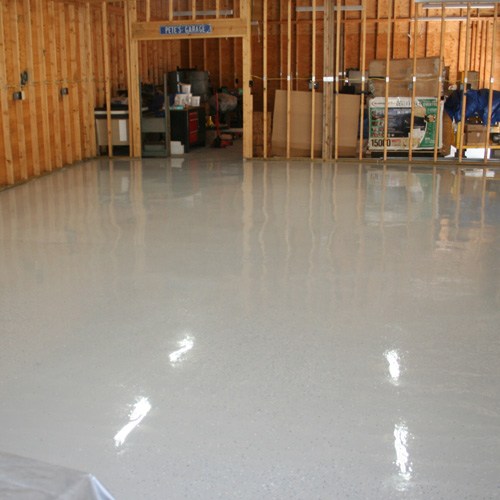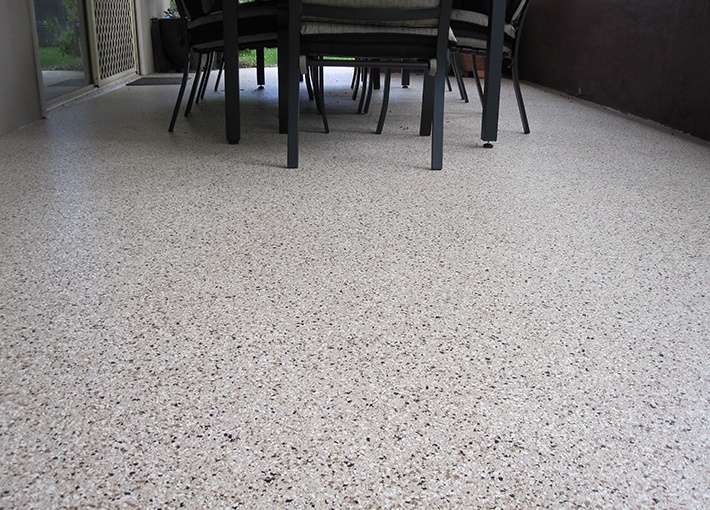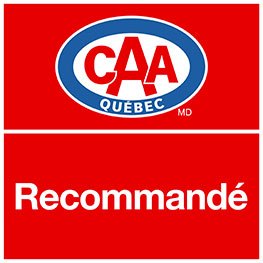EPOXY OR POLYUERA: WHICH TO CHOOSE?
As a company specializing in the installation of garage floor covering products, we are often asked to recommend the most appropriate product for our customers.
Two of the most commonly used products for garage floors are epoxy and polyaspartic (aliphatic polyurea). While both products offer unique benefits, it is important to understand the differences between the two before making a decision.
Comparison between epoxy and polyaspartic for garage floors
Benefits of epoxy:
- Durability: Epoxy is very durable and resistant to scratches and abrasion, making it ideal for high traffic areas such as garages.
- Chemical Resistance: Epoxy is resistant to chemicals such as oils, acids and solvents, making it ideal for use in garages and workshops.
- Ease of Maintenance: Epoxy is easy to clean and maintain, making it a practical choice for areas where dirt and dust can accumulate.
- Aesthetics: Epoxy is available in a variety of colors and finishes, allowing you to customize the look of your garage floor.
- Water Resistance: Epoxy is waterproof, making it an ideal choice for areas where liquid spills may occur.
Disadvantages of epoxy:
- Drying Time: Epoxy takes longer to dry than polyaspartic, which means it may take longer to complete the project.
- Difficult application: The application of epoxy requires careful preparation of the surface before application.
- UV Sensitivity: Epoxy may yellow or discolor under exposure to UV light.
- Can be slippery: Epoxy can become slippery when wet, which can be a safety concern.
- Cost: Epoxy can be less expensive than polyaspartic due to its chemical composition.
Advantages of polyaspartic:
- Fast Drying: Polyaspartic dries faster than epoxy, which means the project can be completed more quickly.
- Wear resistance: Polyaspartic is very wear resistant, making it ideal for high traffic areas.
- UV Resistance: Polyaspartic is UV resistant, making it ideal for use in outdoor areas exposed to the sun.
- Flexibility: Polyaspartic is more flexible than epoxy, making it less susceptible to cracking.
- Versatility: Polyaspartic can be used on a variety of surfaces including concrete, wood and metals.
Disadvantages of polyaspartic:
- High cost: Polyaspartic is generally more expensive than epoxy because of its durability and wear resistance.
- Chemical Sensitivity: Polyaspartic can be damaged by chemicals, which can lead to discoloration or deterioration of the coating.
- Difficult maintenance: Polyaspartic can be more difficult to clean and maintain than epoxy under industrial conditions.
- Color and Finish Limitations: Polyaspartic is generally available in a limited number of colors and finishes, which can limit customization options.
Trust the experts for your work
While some homeowners consider carrying out the project themselves, calling in a professional guarantees uniform application and minimizes the risk of costly mistakes. Trust Prostationnement for your renovations.
Main Features
Epoxy :
- Composition: Epoxy is a thermosetting polymer formed by the chemical reaction between a resin and a hardener.
- Viscosity: Epoxy coatings have a lower viscosity, making them easier to apply and allowing better adhesion to porous surfaces such as concrete.
- Thermal resistance: Epoxy coatings resist heat well up to a certain point, but can lose their structural integrity at high temperatures.
Polyaspartic :
- Composition: Polyaspartic coatings are aliphatic polyureas, a subclass of polyureas, which are the result of a reaction between an isocyanate and a polyaspartate.
- Viscosity: Polyaspartic coatings have a higher viscosity, which can make them more difficult to apply, but offer better abrasion resistance.
- Thermal resistance: Polyaspartic coatings maintain their structural integrity at higher temperatures than epoxy coatings.

Comparative analysis
To provide a clearer overview of how these two options compare, we have compiled a summary table below:
| Criteria | Epoxy | Polyaspartic |
|---|---|---|
| Service life | Long | Very long |
| Drying time | Longer | Shorter |
| UV resistance | Low | High |
| Cost | Less expensive | More expensive |
| Chemical Resistance | High | Moderate |
| Application | Easier with preparation | More difficult |
| Flexibility | Lower | Greater |
| Variety of Colors | Wide | Limited |

Epoxy and polyurea applications
The practical application of epoxy and polyaspartic coatings will depend on the environment and project requirements.
For example, a mechanical workshop may benefit more from an epoxy coating because of its chemical resistance, while an outdoor parking lot may benefit from polyaspartic because of its UV resistance.
Conclusion
In summary, the choice between epoxy and polyaspartic will depend on the specific needs of each project. If durability and chemical resistance are the primary concerns, epoxy may be the best choice. If time and wear resistance are important, polyaspartic may be preferable. Ultimately, it is important to work with an experienced professional to choose the product that best suits your needs and budget.






